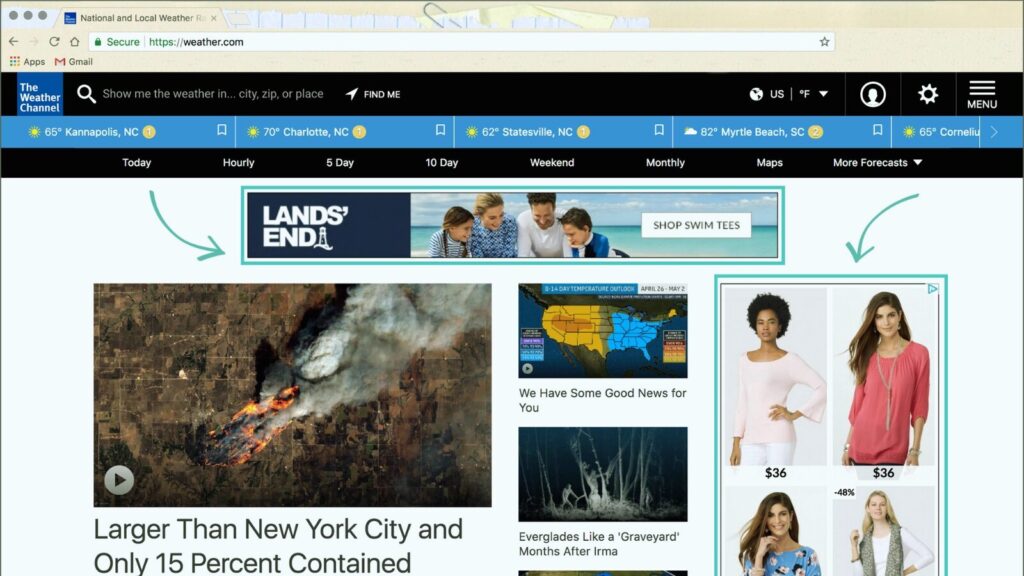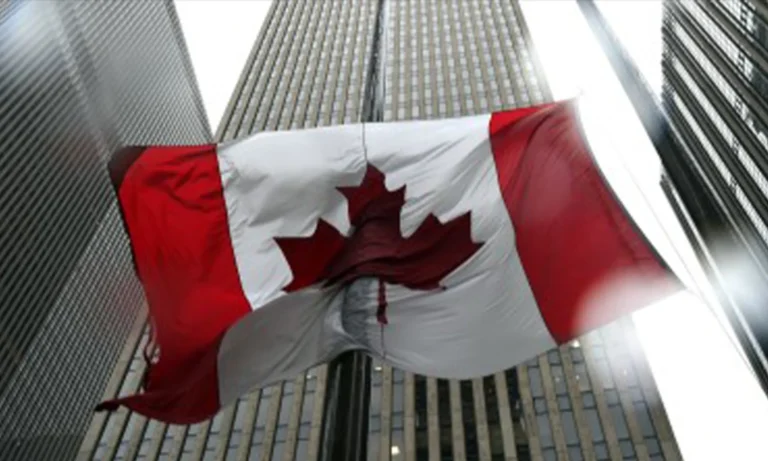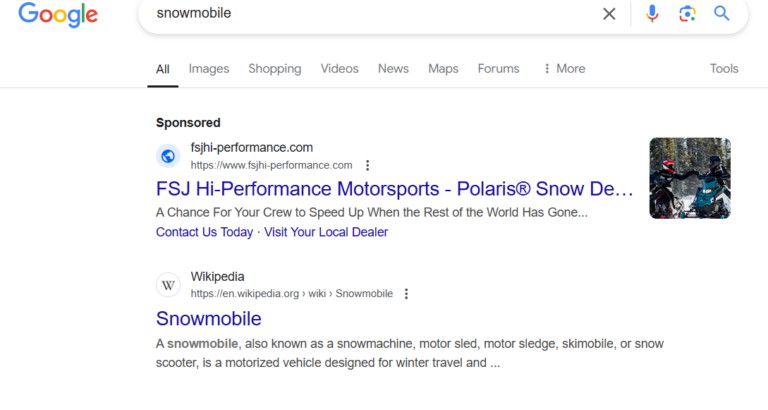

Google Display Ads 101: Everything You Should Know About Google Display Ads
When it comes to promoting your business online, it is no secret that Google ads reign supreme. Even after decades of market dominance, Google is still the most popular choice for online ads. Advertising on Google offers business owners the ability to reach billions of search users. However, most business owners don’t realize that there are a variety of ad types suited to your business goals. These included classic Search ads, Display ads, Shopping ads, App ads and more. Today we are going to be talking about Google Display Ads.
Google Display ads are a digital advertising tool, offering businesses a powerful way to reach customers and make more sales. Whether you’re new to advertising or looking to refine current campaigns, this contains everything you need to know. From basic ad concepts to advanced optimization strategies, we cover everything Google Display Ads. Let’s get started.
What Are Display Ads?
Google Display Ads are visually engaging advertisements that are shown across millions of websites, apps, and YouTube videos. The platforms belong to the Google Display Network (GDN) group. Unlike Search Ads, which target users actively searching for specific keywords, Display Ads reach people as they browse content online. This makes them ideal for brand awareness, remarketing, and audience targeting. Distinguishing themselves further from Search Ads, Display ads also come in various formats. This includes banners, images, videos, and interactive elements. Your ads can be shown to users based on their interests, demographics, or past website visits.
For example, a fitness brand can use Google Display Ads to retarget users who viewed their website but didn’t buy. Reminding them of their products while they read an article or watch a video encourages conversions subtly. Another bonus of Google Display Ads it that they offer a broad reach. This advanced targeting option helps businesses connect with potential customers throughout their online journey. You can reach customers even before they actively search for a product or service.
Google Display ads are typically used for:
- Brand Awareness: Introducing your business to a broader audience.
- Retargeting: Re-engaging users who have interacted with your site but haven’t converted.
- Promotions: Highlighting specific offers or events.
Google Display Ads are visually versatile. They support static images, animated graphics, and even interactive videos. These features make them a great choice for businesses looking to create memorable impressions.
How Google Display Ads Differ From Other Campaigns
Google Display Ads differ from other Google ad types primarily in their placement, targeting approach, and purpose. Unlike Search Ads, which show up in Google search results when users actively look for specific keywords. Google Display Ads are shown across websites, apps, and on YouTube as users browse content. This makes them more effective for brand awareness and remarketing rather than capturing immediate search intent.
Compared to YouTube Ads, which are video-based and typically require user engagement before skipping, Google Display Ads can appear as banners, interactive images, or responsive formats. These seamlessly integrate into the content users are already consuming. Additionally, while Performance Max and Shopping Ads focus on direct product promotions and sales. Google Display Ads are often used for building recognition and nurturing leads over time. With broad reach and advanced targeting options, they allow businesses to connect with potential customers before they actively search for a product or service. This makes Google Display ads a strategic complement to other ad types.
- Search Ads: These ads are triggered by specific user queries on Google. For example, if someone searches for “best laptops under $1000,” search ads for relevant products will appear at the top of the results page. Search ads are highly intent-driven and focus on users ready to act.
- Shopping Ads: Ideal for e-commerce, these ads showcase product images, prices, and descriptions directly in search results. They are highly effective for product-based businesses looking to drive immediate purchases.
- Video Ads: These ads are designed for platforms like YouTube and can appear before, during, or after video content. They’re great for storytelling and creating emotional connections with viewers.
- Display Ads: In contrast, display ads target users who are browsing websites, reading articles, or watching videos but may not have immediate purchase intent. These ads are more about sparking interest or reminding users about your brand, products, or services.
For businesses focused on long-term brand growth and customer retention, Google display ads complement other campaigns by keeping your brand visible across a range of digital touchpoints.
What Is a Campaign?
A campaign in Google Ads is the highest-level structure that organizes and controls a group of ads, ad groups, keywords, and targeting settings under a common strategy. It defines the objective (such as sales, leads, or brand awareness), budget, bidding strategy, and targeting criteria (such as location, devices, and demographics). Each campaign can contain multiple ad groups, which further organize related keywords and ads.
An ad, on the other hand, is the individual piece of content that appears to users. It consists of headlines, descriptions, images, or videos and is what people actually see when they interact with a campaign. Ads are housed within ad groups and are tailored to match specific keywords or audience segments.
The key difference is that a campaign sets the overall strategy and budget, while ads are the actual creative elements that users engage with. For example, a law firm might create a Google Search campaign targeting legal services in a specific city, with different ad groups for “divorce lawyers” and “personal injury attorneys.” Each ad group would then contain multiple ads with varying headlines and descriptions tailored to those services.
Key Feature Of A Google Ad Campaign Include:
- Objective: Choose a goal like brand awareness, website traffic, or conversions. For example, a furniture store might set up a display campaign to promote its Black Friday sales.
- Budget: Decide how much you’re willing to spend daily or over the campaign’s duration. Display campaigns typically have a lower cost-per-click (CPC) than search campaigns, making them cost-effective for awareness-building.
- Targeting: Use Google’s powerful audience tools to define who sees your ads. Options include:
- Demographics: Age, gender, income.
- Affinity Audiences: Interests like fitness, travel, or technology.
- Custom Audiences: Users who’ve visited specific websites or searched certain keywords.
Organizing your Advertising campaign effectively ensures your PPC ads reach the right people at the right time.
Best Practices for Google Display Ads
Best practices refer to the most effective and proven methods for achieving success in a particular area. These are strategies, techniques, or guidelines that have been tested and refined over time to maximize efficiency, performance, and results. Best practices can apply to any industry, from marketing and web design to business operations and customer service.
In the context of Google Ads, best practices include actions like using relevant keywords, writing compelling ad copy, optimizing landing pages, monitoring key performance metrics, and adjusting bids based on data. For web design, best practices may involve mobile responsiveness, fast loading speeds, clear navigation, and strong calls to action. Following best practices helps businesses avoid ommon mistakes, improve user experience, and increase the likelihood of success in their campaigns or projects.
Google Display Ads Best Practices Include:
Design with Clarity
Display ads only have seconds to catch a users attention. Use high-quality visuals, simple designs, and minimal text. A cluttered ad can confuse viewers, while a clean design with a strong focal point draws them in.
Create a Clear Call-to-Action (CTA)
Your ad should guide users on what to do next. CTAs like “Shop Now,” “Learn More,” or “Sign Up Today” provide a clear path for viewers to follow. Place the CTA prominently and make it visually distinct.
Optimize for Mobile
More than half of internet traffic comes from mobile devices, so your ads must look great on smaller screens. Use responsive designs that adjust to different devices without losing impact.
Test and Iterate
Run A/B tests to compare different headlines, images, and CTAs. For example, try testing an ad with a humorous tone versus one with a more professional tone to see which resonates better with your audience.
Leverage Audience Targeting
Google’s targeting tools let you reach users based on their behavior, interests, and online activity. For instance, if you’re selling hiking gear, you can target outdoor enthusiasts or people researching national parks.
How to Set Up a Display Ad
Creating a display ad campaign is straightforward with Google Ads. Follow these steps:
- Log In to your Google Ads account and click on “Create Campaign.”
- Choose Your Objective: Select a goal like brand awareness or conversions.
- Select Campaign Type: Choose “Display” from the list of campaign types.
- Define Targeting Criteria: Set audience parameters like location, interests, and demographics.
- Set Budget and Bidding: Determine your daily spend and bidding strategy (e.g., maximize clicks or conversions).
- Create Your Ad: Upload visuals and write headlines and descriptions. If you’re unsure, use responsive display ads to let Google optimize your creatives.
- Launch and Monitor: Review the campaign setup, launch it, and monitor performance regularly to make adjustments.
Benefits of Google Display Ads
Google Display Ads offer several key benefits, making them an effective tool for brand awareness, audience targeting, and remarketing. Unlike Search Ads, which rely on users actively searching for keywords, Display Ads allow businesses to reach potential customers before they begin their search, placing visually engaging ads across websites, apps, and YouTube. This broad exposure helps brands stay top-of-mind and attract new audiences. Display Ads also provide advanced targeting options, including demographic filters, interest-based targeting, and retargeting, ensuring businesses connect with the right users at the right time
. Additionally, their cost-effectiveness makes them a valuable option for businesses looking to expand their reach without the higher competition of search campaigns. By leveraging eye-catching visuals and strategic placements, Display Ads help businesses drive engagement, generate leads, and reinforce their brand presence across the web.
Key Benefits Include:
- Broad Reach: With access to millions of websites, you can reach audiences in virtually any niche.
- Cost-Effective: Display ads often cost less per click than search ads, making them ideal for businesses with tighter budgets.
- Brand Awareness: Even if users don’t click, your ads increase brand visibility, keeping your business top-of-mind.
- Dynamic Formats: From static images to interactive videos, display ads offer creative freedom to convey your message effectively.
When to Use a Display Ad and When Not to Use One
When to Use Display Ads
Google Display Ads are best suited for brand awareness, remarketing, and targeting users who may not be actively searching for your product or service yet. They work well when you want to keep your brand visible across millions of websites, apps, and YouTube videos, helping potential customers recognize and remember your business. Display Ads are particularly useful for retargeting, allowing you to re-engage users who previously visited your website but didn’t convert.
They’re also effective for visual industries, such as fashion, travel, and real estate, where eye-catching images can attract attention. If your goal is to reach a broad audience, introduce a new product, or stay in front of potential customers throughout their online journey, Display Ads are a strong choice.
Display ads are highly effective for specific goals and scenarios, including:
- Building Brand Awareness: They’re ideal for introducing your business to a broader audience. For example, a startup tech company might run display ads to showcase its innovative product to potential customers.
- Retargeting: If someone visited your website but didn’t make a purchase, display ads can help re-engage them. Retargeting campaigns often show personalized ads reminding users of products they viewed or abandoned in their cart.
- Driving Website Traffic: If you want to attract users to your blog, landing page, or e-commerce store, display ads can guide them there.
When Not to Use Display Ads
Display Ads are not the best option when you need to target high-intent users who are actively searching for your product or service. If your goal is immediate conversions, Google Search Ads are often more effective, as they capture users at the moment they express interest. Additionally, if your budget is limited and you need to maximize return on investment (ROI) quickly, Display Ads may not be the best choice because they tend to have lower conversion rates compared to Search Ads.
They’re also less effective for industries where direct response and fast lead generation are the top priorities, such as emergency services or legal consultations. If clicks without action could result in wasted ad spend, focusing on Search Ads or Performance Max campaigns may be a better strategy.
Display ads are not as effective in scenarios requiring immediate intent-driven conversions, such as:
- Search Query Match: If you need to capture users actively searching for specific terms (e.g., “buy electric scooters”), search ads are more suitable.
- Tight Budgets for Direct Sales: Display ads may not convert as quickly as search ads. If your goal is immediate sales with limited funds, focus on search or shopping campaigns instead.
Understanding when to deploy display ads ensures you’re aligning your strategy with your advertising goals.
Will Display Ads Deliver the Best ROI?
Google Display Ads typically do not offer the best ROI when compared to Search Ads, but they serve a different purpose in digital marketing. Since Display Ads target users who are browsing content rather than actively searching for a product or service, their conversion rates tend to be lower than Search Ads, which capture high-intent users ready to take action. However, Display Ads excel in brand awareness, retargeting, and audience engagement, which can indirectly lead to conversions over time.
If your goal is immediate sales or lead generation, Search Ads or Performance Max campaigns generally provide a better return on investment (ROI) because they target users with high purchase intent. On the other hand, if you need to build brand recognition, nurture leads, or retarget past visitors, Google Display Ads can be a valuable long-term strategy that supports your overall marketing funnel. The best ROI depends on your specific goals, industry, and how well your campaign is optimized.
While Google Display ads may not always deliver the highest direct conversion rates compared to search ads, they excel in:
- Long-Term Brand Building: Display ads create touchpoints that help users remember your brand, leading to future conversions.
- Lower CPC: Their cost-per-click is often lower than search ads, making them cost-effective for broader reach.
- Complementing Other Campaigns: Paired with search or shopping ads, display ads reinforce your presence throughout the buyer’s journey.
Google Display ads might not yield immediate results, but when used strategically, they can provide excellent ROI over time by enhancing brand recall and engagement.
Responsive Display Ads
What Are Responsive Display Ads?
Responsive Display Ads are a type of Google Display Ads that automatically adjust their size, format, and appearance to fit different placements across the Google Display Network. Instead of manually creating multiple ad variations, advertisers upload multiple headlines, descriptions, images, and logos, and Google’s machine learning dynamically assembles the best-performing combinations based on user behavior and ad placement.
These ads offer broader reach because they can adapt to fit banners, sidebars, and native ad spaces across different websites, apps, and YouTube. They also improve efficiency by reducing the need for multiple ad designs while leveraging Google’s AI to optimize performance. Responsive Display Ads are ideal for businesses looking to maximize visibility with flexible, automated, and data-driven ad placements, ensuring the best possible engagement across a variety of platforms.
Why Use Responsive Display Ads?
- Efficiency: You save time by uploading assets once rather than designing individual ads for different formats.
- Performance Optimization: Google’s AI tests various combinations to find the best-performing versions.
- Versatility: Your ads automatically adjust to fit different devices, platforms, and placements.
What’s New with Google AI and Display Ads?
Google has recently introduced several AI-driven enhancements to its advertising platforms, particularly focusing on Display Ads. In September 2024, at the DMEXCO digital marketing event, Google unveiled new features designed to improve campaign performance and provide advertisers with greater control. These updates include the expansion of AI-powered image editing tools beyond Performance Max campaigns to encompass Search, Demand Gen, App, and Display campaigns. This allows advertisers to enhance their visual assets directly within the platform, streamlining the ad creation process.
Additionally, Google has integrated ads into AI Overviews and Google Lens, enabling businesses to connect with consumers through more interactive and contextually relevant ad placements. For instance, Shopping ads now appear within AI-generated overviews and alongside visual search results in Google Lens, allowing users to discover products seamlessly during their search experience. This integration aims to meet consumers at pivotal moments, from initial discovery to the point of action.
These advancements reflect Google’s commitment to leveraging AI to enhance the effectiveness and reach of Display Ads, providing advertisers with innovative tools to engage audiences more effectively.
- Automated Targeting: AI identifies high-performing audience segments beyond your initial settings, expanding your reach.
- Smart Bidding: Google AI adjusts your bids in real-time based on user intent, device, and behavior to maximize results.
- Enhanced Creative Optimization: With responsive display ads, Google AI continuously tests and optimizes your ad combinations to improve click-through rates (CTR) and engagement.
How Can Google AI Help My Display Ads?
Google AI transforms the effectiveness of your campaigns by:
- Improving Targeting Accuracy: It uses machine learning to analyze user behavior and deliver ads to the most relevant audiences. For instance, a user who recently searched for “budget smartphones” might see your ad for a new phone launch, even if they’re browsing unrelated content.
- Optimizing in Real Time: Google AI adjusts bids dynamically to ensure your ads appear at the right moment to the right person.
- Saving Time: By automating creative testing and audience discovery, you can focus on strategy while AI handles the execution.
Other Display Ad Types
Apart from responsive ads, you can experiment with various display ad types:
- Static Image Ads: Simple ads with a single image and text, great for clear and direct messaging.
- Animated Ads: These ads use motion to grab attention, ideal for showcasing multiple products or features.
- Video Ads: Highly engaging and perfect for storytelling, these ads can appear within YouTube videos or across the Display Network.
- HTML5 Ads: Interactive ads that allow users to engage with your content directly, such as clicking through a product catalog.
Each type serves unique purposes, so choose based on your campaign goals and audience preferences.
When Display Ads Show
Display ads appear across the Google Display Network based on your targeting settings. They can show:
- On Websites: Ads are placed on relevant sites aligned with your audience’s interests or behaviors.
- Within Apps: Reach users while they’re engaging with mobile apps, such as gaming or lifestyle apps.
- On YouTube: Although primarily for video ads, display ads can appear as banner overlays on YouTube videos.
Google ensures your ads appear where your audience is most likely to engage, maximizing your reach.
How Performance Data Works
Google Ads provides detailed metrics to measure your display campaign’s success, including:
- Impressions: The number of times your ad was displayed to users.
- Clicks: How many people interacted with your ad by clicking on it.
- CTR (Click-Through Rate): The percentage of impressions that resulted in clicks, a key indicator of ad effectiveness.
- Conversions: The number of desired actions (e.g., purchases, sign-ups) completed after interacting with your ad.
- Cost Per Conversion: The total cost divided by the number of conversions, showing how cost-efficient your campaign is.
Regularly analyzing these metrics helps you refine your Google ads for better performance.
The Future of Display Ads with Google AI
Google AI continues to evolve, with features like Performance Max campaigns offering fully automated ad management across Google’s platforms. This includes:
- Improved Creative Suggestions: Google’s AI recommends headlines and visuals to enhance ad performance.
- Cross-Platform Synergy: Seamlessly integrate display ads with YouTube, search, and shopping campaigns for a unified strategy.
Embracing these innovations ensures your campaigns stay competitive and effective.
Final Thoughts
Display ads are a powerful tool for reaching your audience and building lasting brand visibility. By understanding their unique strengths, leveraging assets like Google AI, and following best practices, you can create impactful campaigns that deliver tangible results. Remember, the key to success lies in continual learning, testing, and optimization.
If you’re ready to elevate your advertising game, Lets get to work. We can help you master Google display ads today.






